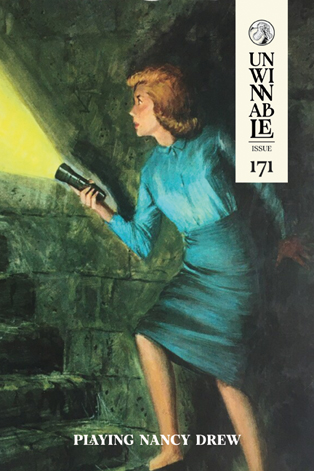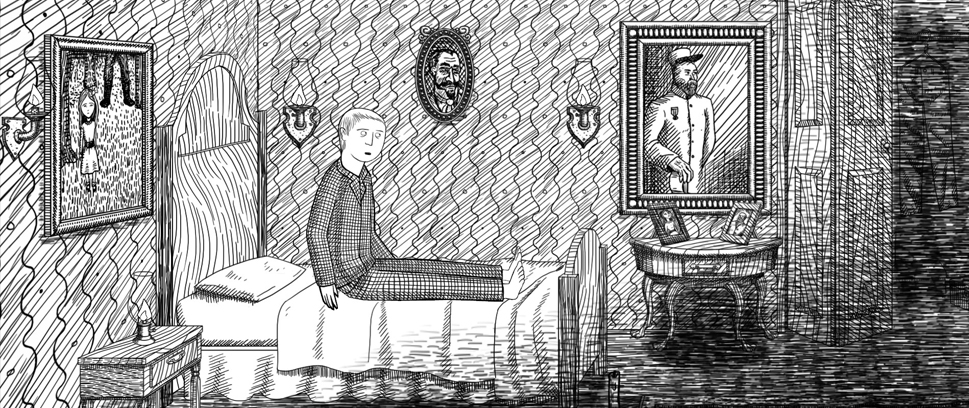
Loading the Gun: Simulation and Realism in Horror Mechanics

This column is a reprint from Unwinnable Monthly #171. If you like what you see, grab the magazine for less than ten dollars, or subscribe and get all future magazines for half price.
———
We are what we’re afraid of.
———
I’ve always been a massive Amnesia fan. From my first time playing The Dark Descent alone in my college dorm, I knew Frictional was really on to something. And the newest entry, Amnesia: The Bunker, is no exception. In particular, Bunker works really effectively to capture the anxiety of doing things in the moment through drawn out manual actions for basic in-game tasks – Amnesia has had its classic two-step motion to open a door since the beginning, but I was viscerally reminded of Frictional’s tendency to make you work for it when I was trying to load the revolver in Bunker. Pulling out the revolver and opening the chamber is one button, and you load each bullet manually, making what is typically a rote millisecond action in other games into a protracted, nerve-shredding thing. So, I’m writing a whole column about it.
Well, okay. Not just about that. But it did get me thinking – we often think horror is about the monsters, or about the environment. But how can we bake horror into the very mechanics of something? How can we create horror at the level of procedure? I think mechanics, like loading the revolver, are an excellent breeding ground for increasing tension and enhancing the horror of any given moment within a game. But why is this so?
To go into my theory, I have to get downright professorial for a moment and explain a teeny little bit of recent philosophical thought, so bear with me. There are two terms I’ll be using here, and I’m relying on the work of Jean Baudrillard for my definitions, should you like to look more into this. Fundamentally, I think horror in game mechanics arises from the difference in how we interact with things that are realistic versus things that absolutely are not. Baudrillard believed that this distinction, of things in art that have their roots in reality versus things that do not, was important. He termed things that are attempts to replicate reality “simulation,” while things that are so removed from reality as to no longer accurately reflect lived experience are called “simulacra.” Baudrillard was afraid that most of our modern media, with its hyper-exaggerated features and melodrama, were all simulacrum, and that this eroding our ability to communicate and interface with the world in important ways.

While I’m not going to wade fully into the argument of “simulacrum as damaging to society” I do think that the difference between simulation and simulacra has an impact on how we react to something emotionally, particularly in regards to horror. To break down my argument, I’ll use two examples, one a simulacra and the other a simulation, and show how we can see a difference in our emotive reaction to the game because of the mechanics.
For my first example, let’s look at my Least Favorite Horror Game of all Time: Resident Evil 4. I know that coming out publicly as disliking this game is a big risk but hear me out. Whereas in prior Resident Evil titles, the player is relatively underpowered, and every encounter presents distinct risk, in RE4 Leon is presented as a macho powerhouse, and there isn’t the same level of emphasis on ammo preservation and strategy. Simply put, in RE4 the player is put in a position where they’re really good at killing things, which (for the vast majority of players) is a position that in no way reflects their lived reality and thus is a simulacra. And because you are so good at killing things, I argue that there is little to no tension or fear during play. The simulacra destroys the tension. For an even more exaggerated example of simulacra, you can think of Doomguy – essentially an unkillable God that no one could ever aspire to be.

For our other example, I’ll return to the revolver-loading mechanic in Amnesia: The Bunker. This mechanic is hyper-realistic, and effectively places the player in the same situation they would be in if they were truly in a life-or-death situation, fumbling to put in each individual bullet. This clumsy terror is, unless you’re a trained Navy SEAL, pretty reflective of how we all would engage with a scenario in real life where we were forced to defend ourselves. This realism is, I argue, why this franchise is so uniquely terrifying. It strips away many of the niceties (read: we’re once again talking about power fantasies) of gaming and forces you to engage fully with the minutiae needed to exist in the world of the game, which is incredibly hard and scary when something is actively trying to kill you.
So, my ultimate point here is that it seems like simulations in game mechanics tend to be actively scarier than simulacra. And there is something to be said for the idea that things we know and understand are ultimately scarier than things we know not to be reflective of reality – it’s part of why so much horror is inherently allegorical. The scary thing is never really the monster – it’s systemic racism, being alone, or the passing of time. Stuff we deal with on a daily basis. And so, with things like mechanics, videogames are able to more closely access the lived aspect of being afraid through simulated realism, and thus terrify us all the more.
———
Dr. Emma Kostopolus is an Assistant Professor of English at Valdosta State University. Online, you can find her nowhere, but check out her film reviews for Ghouls Magazine and her recent article for Computers and Composition Online. She’s also the co-author of Ace Detective, a murder mystery dating sim you can play at oneshotjournal.com.




